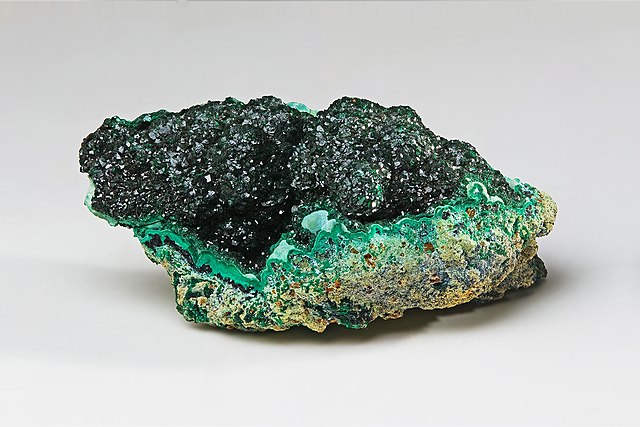Copper is an essential metal that has been used by humans for thousands of years. It is an excellent conductor of electricity and is widely used in a variety of industries, including electronics, construction, and transportation. Copper is primarily produced from minerals that contain copper as a major component. Understanding the different copper minerals and their properties is important for the exploration, mining, and processing of copper deposits.
Copper minerals can be broadly classified into sulfide minerals, oxide minerals, and native copper. The most common copper mineral is chalcopyrite, a sulfide mineral that contains about 34% copper by weight. Other important copper minerals include bornite, chalcocite, and malachite. These minerals can occur in a wide range of geological settings, including porphyry copper deposits, skarns, and sedimentary copper deposits.
The specific mineralogy and mineral associations can have significant implications for the processing and extraction of copper from the ore. For example, some copper minerals are more amenable to leaching, while others require flotation or smelting. In addition, the mineralogy can impact the concentration of other metals that may be present in the deposit, such as gold, silver, and molybdenum.
Contents
Chalcopyrite

This is the most common copper mineral and contains about 34% copper by weight. It is a sulfide mineral that typically occurs in large deposits and is the primary source of copper production worldwide.
Bornite

Also known as peacock ore, bornite is a sulfide mineral that contains up to 63% copper by weight. It is often found in association with chalcopyrite and is a secondary source of copper production.
Chalcocite

This is a secondary copper mineral that forms from the weathering of primary sulfide minerals, such as chalcopyrite. It contains up to 80% copper by weight and is an important source of copper in some deposits.
Malachite

This is a copper carbonate mineral that forms from the weathering of primary copper minerals. It contains about 57% copper by weight and is an important secondary source of copper production.
Cuprite

This is a copper oxide mineral that contains up to 88% copper by weight. It is often found in association with other copper minerals, such as chalcocite and native copper, and is a minor source of copper production.
Native copper

File:Copper-21991.jpg. (2022, November 3). Wikimedia Commons, the free media repository. Retrieved 13:15, April 2, 2023 from https://commons.wikimedia.org/w/index.php?title=File:Copper-21991.jpg&oldid=702238281.
This is copper in its pure metallic form and is a rare mineral. It is often found in association with other copper minerals and is a minor source of copper production.
Azurite

This is a copper carbonate mineral that is often found in association with malachite. It contains up to 55% copper by weight and is a secondary source of copper production.
Covellite
This is a sulfide mineral that contains up to 66% copper by weight. It is often found in association with chalcocite and is a secondary source of copper production.
Enargite

This is a sulfide mineral that contains up to 48% copper by weight. It is often found in porphyry copper deposits and is a secondary source of copper production.
Tetrahedrite

This is a sulfide mineral that contains up to 30% copper by weight, as well as other metals such as silver, zinc, and antimony. It is often found in association with other copper minerals and is a secondary source of copper production.
Digenite

This is a sulfide mineral that contains up to 79% copper by weight. It is often found in association with chalcocite and is a secondary source of copper production.
Tenorite

This is a copper oxide mineral that contains up to 79% copper by weight. It is often found in association with other copper minerals and is a minor source of copper production.





































